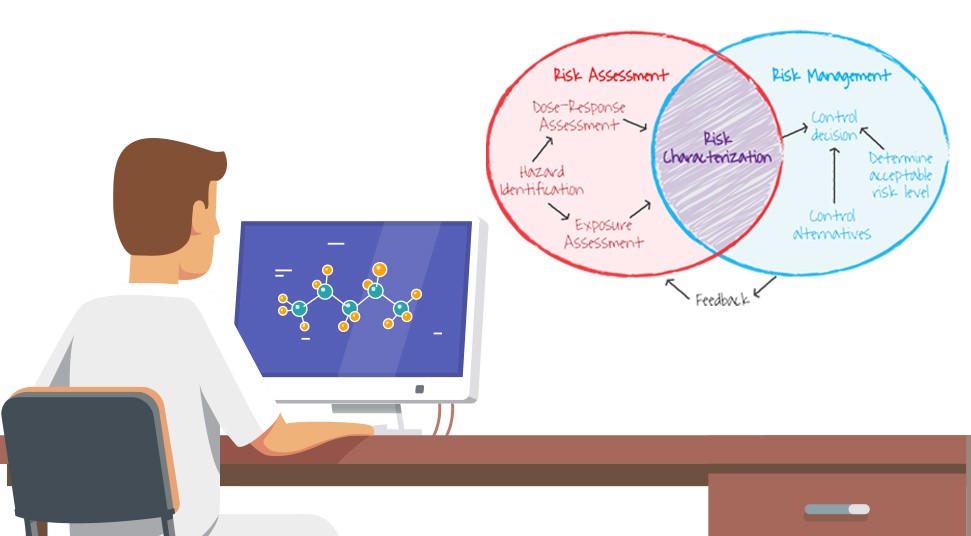User access review is a control activity, which proves that only approved users have access to your company’s data. As part of your data security strategy, you should regularly review and authenticate user access privilege.
In doing so, you will be able to monitor user privilege accumulation over a specified period. Controlling and reviewing access to your systems and data therein isn’t just an Enterprise Security obligation but also a compliance requirement.
By undertaking user access review continually, you will also be able to maintain compliance with federally mandated regulations such as Sarbanes-Oxley.
Even if your company has a strong password policy, system access ought to be monitored continually. Within the scope of the access review, password safety poses the lowest risk as far as data security is concerned.
Here’s how you can conduct an effective user access rights review.
Evaluate User Access Risks

Risks are part and parcel of all computer systems because those accessing your system can be malicious, or they make commit mistakes unknowingly. To effectively review user access, you should first pinpoint and assess the risks that users bring along with them.
It is recommended to rank users according to who has the highest level of access to your systems. Users with more access should have a higher risk ranking compared to those with less access. When evaluating user access risk, you should keep in mind that new employees and system users pose an initial risk.
Rather than asking the IT department to add the newbies at a similar level of access as current users or employees, you should first have them vetted.
Even though you might have employees working in one department, it doesn’t mean that they all require the same level of access. Assigning access carelessly can result in violations, which could lead to breaches.
Evaluate Access Termination Policies

In the course of your company’s operations, some employees will leave for various reasons. For those whose employment get terminated, the timeliness of access termination can also be a risk factor. Involuntary termination sometimes makes individuals to act maliciously.
Therefore, termination of access ought to be as close as possible to the termination of employment. Likewise, the access needs of employees who get transferred from one department to another should also get reviewed.
It is recommended to review your organization’s termination procedures at least yearly. Review and compare the termination policies and procedures stipulated by the HR department, and compare them to the sample list of individuals whose access has been revoked.
Undoubtedly, you do not want former employees to access your data. Reviewing access termination shows that your IT and HR departments are in communication. It is an indicator that you conduct a useful user access review.
Establish Appropriate Access Procedures And Policies

Just like it is the case with other corporate decisions that relate to compliance, you should ensure that user access review is procedural. Also, it should have a unique policy. Once you identify risks that arise from system access, you should devise ways of mitigating those risks. Generally, there are two main approaches to user access procedures and policies.
The Deny All approach denies system user access to data unless they specify why they need it. If you choose this approach, your IT department will review all user access requests besides determining additional access on need and case-by-case basis. On the other hand, the Allow All approach grants access to users until they prove their unworthiness.
The Deny All approach is suitable for large organizations, which store lots of sensitive data in their system. For startups and smaller companies where jobs overlap occasionally, the Allow All approach will be suitable. Irrespective of the strategy that you choose, compliance concerns including duty segregation, must be regularly reviewed.
Undertake User Training Regularly
Often, business owners and managers have the misconception that user access review should be solely left to the IT department. For your cybersecurity system to work, everyone involved in the day-to-day operations of your company should understand their role as far as user access is concerned. If managers grant access to employees without a clear purpose, for instance, the company’s cybersecurity stance could get compromised.
Regular training entails informing everyone about the role that they play in safeguarding your data, as well as the different levels of access that they have to your system. Similarly, training goes a long way in nurturing a culture of data security.
Review Access Functions Regularly

You should regularly review the profiles of users who have access to different parts of your system. In doing so, you will ensure that users have the requisite access. It will also be easier for IT to lock access to functions that are not needed. If employees aren’t using a data asset, access shouldn’t be granted since it could open a vulnerability.
Monitoring system access is more about reviewing the amount of information that employees require to do their job and less about password safety. Your company’s system faces a wide range of electronic and human risks, especially if employees enter and exit the system on a rotational basis.
Monitoring user access is the most effective way of preventing data loss. Reviewing access profiles provides a layer of protection besides helping you monitor users’ behavior once they access your system.
Plan Early And Automate The Process

Just like any other audit process, user access review is a labor and time-intensive undertaking. For it to be successful, it’s advisable to plan early besides allocating adequate resources to the activity on time.
In this regard, take into consideration the time that individual reviews will take. To speed things up, use automation tools such as Identity Manager servers.
Such tools can undertake parallel processing, thus speeding up the access review process. When adding or terminating employee access, tools such as Core Security come in handy. These tools are easy to use, and they provide a pertinent bridge between your company’s directory services and HR systems.
Moreover, you can get valuable transaction data relating changes in users’ employment and access status.
Arguably, the most significant benefit of using automation tools is that they provide alerts that enable you to make necessary adjustments as far as user access is concerned. Typically, user access reviews are undertaken for compliance rather than security purposes.
The daily alerts that you get from monitoring software go a long way in helping you fortify your company’s cybersecurity and compliance stance. From these alerts, it’s easy to pinpoint areas where user access is compromised.
Automation sets the tempo for effective user access review, and even allows the process to run itself. By automating processes such as information sharing and the actions that users take when they access your system, it will be easier to determine whether that access is warranted.
With an automated user access review tool in place, creating and documenting user lists and activities will be straightforward.
User access reviews play a significant role as far as protecting your company’s information assets is concerned. Whether you want to protect yourself against malicious activities or accidental breaches, you should incorporate user access reviews into your cybersecurity plan.
Likewise, it is easier for organizations that undertake regular user reviews to maintain compliance with state and federal laws and regulations.
Images Credit By Pixabay.com


